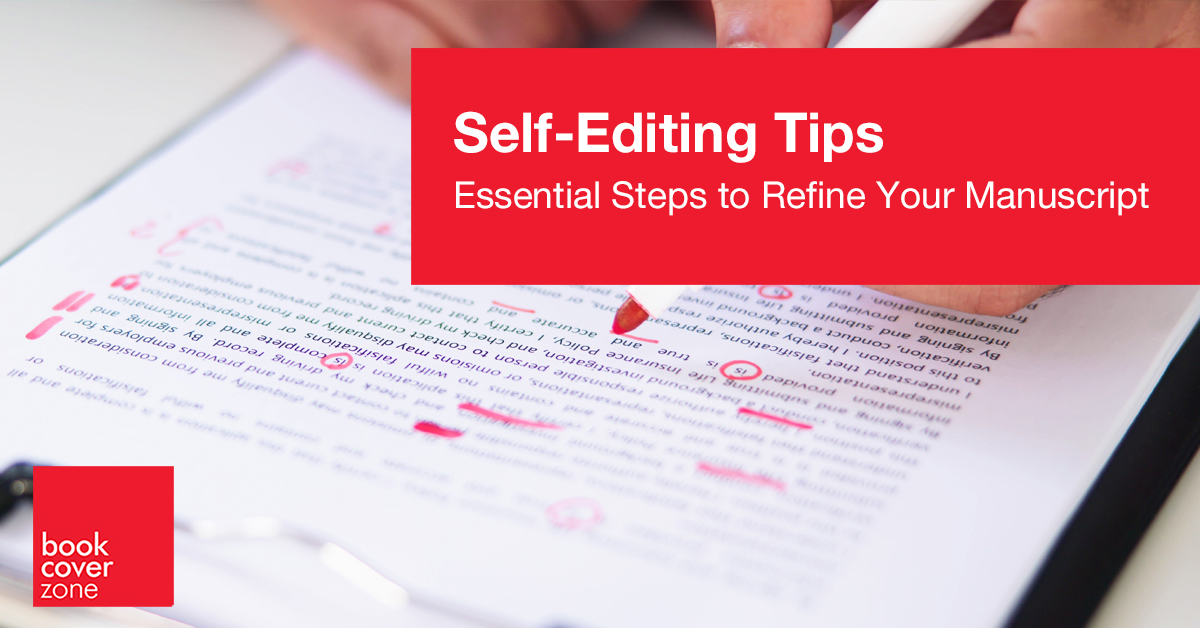Editing is a crucial step that can make or break your book’s success, transforming a promising story into a polished masterpiece. Readers are quick to pick up on errors and inconsistencies, so getting the editing right is essential. There are two main types of editing: professional and self-editing. While a professional editor brings valuable expertise to refine your work further, self-editing is an important first step that lets you shape your narrative. As the author, you know best what you want to emphasize and how your story should flow, so diving into self-editing ensures your unique voice and vision shine through before handing it off to the pros.
Here are some practical self-editing tips, each demonstrated with how they can be effective.
Let It Sit
Putting your manuscript aside for a few days or weeks gives you emotional and mental distance, allowing you to return with a fresh perspective and spot issues more effectively, as Stephen King famously suggests a six-week break to approach the draft like an outsider. This break helps you see your work through readers’ eyes, enhancing objectivity.
Read Aloud
Reading your manuscript out loud can help catch awkward phrasing and improve sentence rhythm as it forces you to articulate each word; recording yourself reading a chapter can add an extra layer of analysis, as listening can highlight areas needing improvement. This method also uncovers dialogue that might sound unnatural when spoken.
Focus on Structure
Evaluating the overarching structure ensures that your story flows logically and maintains reader engagement, allowing you to identify and resolve potential plot holes or pacing issues by creating a new outline of your current draft and comparing it to your initial plan. Such an approach helps see where crucial elements may be missing.
Simplify Language
By opting for clarity over complexity, like using “she laughed” instead of “she emitted a sonorous peal of laughter,” you ensure that readers focus on the story, not the language. Simplifying your vocabulary and sentence structure makes your work more accessible and engaging.
Trim the Fat
Streamlining your narrative by cutting redundant scenes, words, or paragraphs clarifies your manuscript and maintains momentum—consider merging two minor characters if they serve the same function. This editing phase keeps only essential elements that contribute to character development and plot advancement.
Check for Consistency
Maintaining consistency in character traits, settings, and timelines strengthens credibility and immersion, ensuring things like your protagonist’s eye color, which shouldn’t change from blue to brown without reason. A style sheet can help track these elements, ensuring they remain faithful throughout the manuscript.
Embrace Strong Verbs
Replacing weak verb/adverb combinations with strong verbs enhances precision and vigor in writing, making the story come alive by using “sprinted” instead of “ran quickly.” This technique conveys action more vividly.
Tighten Dialogue
Ensuring dialogue sounds natural and purposeful eliminates unnecessary tags and clarifies character interactions; efficient dialogue drives the plot and develops characters, as “‘I’m upset,’ she snapped” is more impactful than “‘I’m upset,’ she said with frustration.”
Identify and Replace Tics
Recognizing your repetitive stylistic quirks and replacing or reducing them ensures variety and freshness in your prose—if you repeatedly use “suddenly,” diversifying with descriptors or alternate transitions can prevent reader fatigue and enrich narrative voice.
Utilize Technology Wisely
Editing tools like Grammarly offer a preliminary review by highlighting grammatical errors and style suggestions, but they should not replace your own thorough edits; use software for grammar checks while scrutinizing suggestions to ensure consistency with your desired tone.
By incorporating these self-editing tips, you enrich your manuscript through enhanced clarity, consistency, and engagement, setting your work on the path to success and reader satisfaction.
Remember, self-editing is a dynamic and iterative process, not a strictly linear path. You might find yourself revisiting previously edited paragraphs, and that’s perfectly okay—it’s about refining and polishing your manuscript as you go. One common pitfall is to lengthen the story with each editing round, but it’s essential to focus on shortening and tightening your narrative instead. Your goal should be to enhance the story’s flow, not to bog it down with unnecessary details or slow the pace. Of course, there’s always room to fill in crucial, forgotten details, but think of editing as a quality assurance process in the world of writing. By meticulously refining your work, you’re ensuring that each element serves a purpose and that the final product is a lean, coherent, and compelling read.
